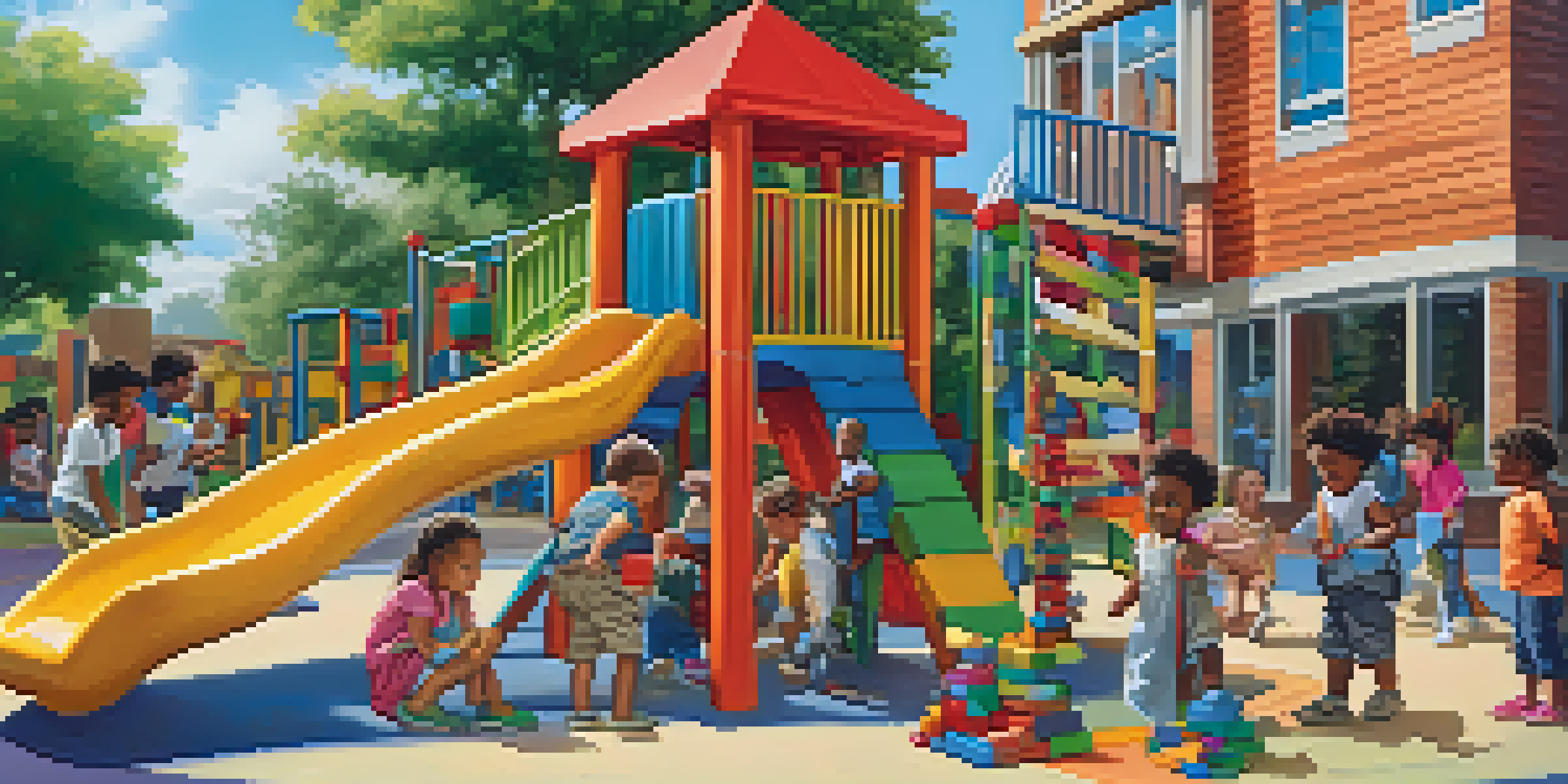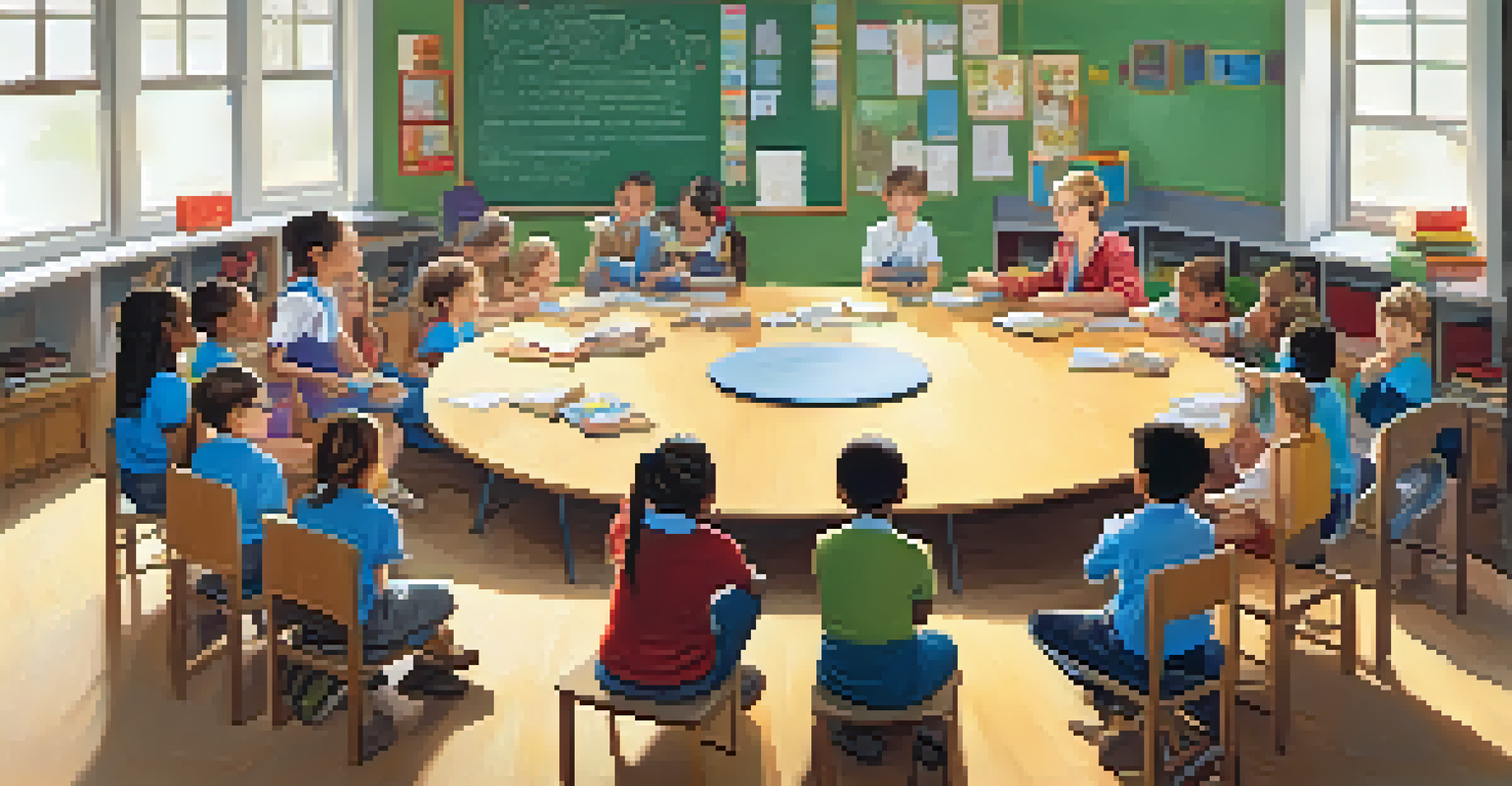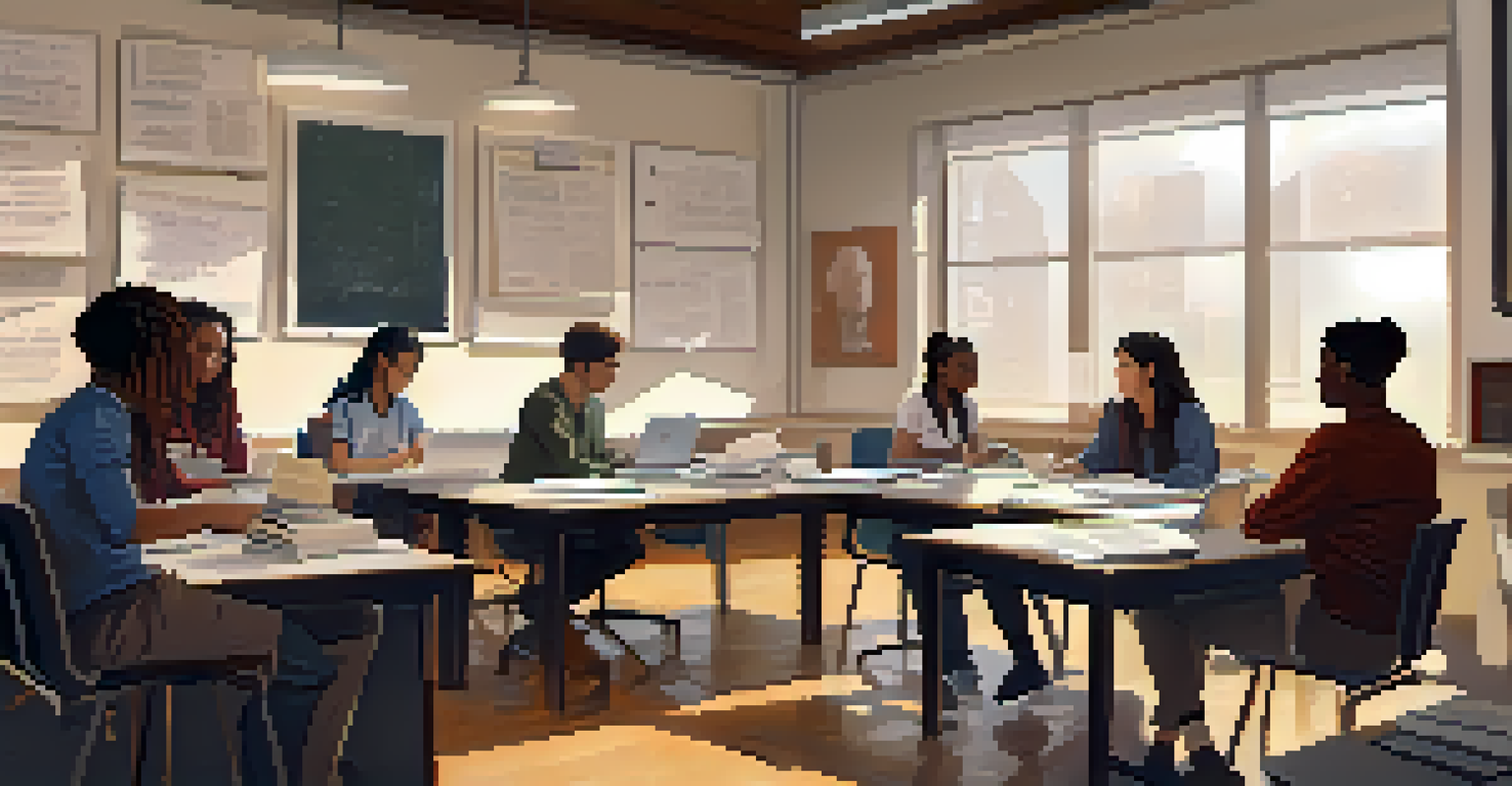Peer Learning Across Different Educational Levels

Understanding Peer Learning: A Broad Overview
Peer learning is a collaborative educational approach where students learn from each other. This technique emphasizes the importance of social interaction in the learning process, allowing learners to share knowledge and skills. Imagine a group of students working together on a project, each bringing their unique strengths to the table. This kind of collaboration not only enhances understanding but also fosters a supportive learning environment.
Tell me and I forget. Teach me and I remember. Involve me and I learn.
At its core, peer learning can take many forms, including study groups, mentorship programs, and peer tutoring. Each of these methods offers opportunities for students to engage actively with the material and with one another. The beauty of this approach lies in its adaptability; it can be tailored to fit various educational contexts and learning styles. This flexibility makes peer learning a valuable tool across different educational levels.
Moreover, peer learning cultivates essential soft skills such as communication, teamwork, and problem-solving. These skills are crucial not only in the classroom but also in the workplace and everyday life. By engaging in peer learning, students not only gain academic knowledge but also prepare themselves for future challenges. It’s a holistic approach that benefits learners beyond just grades.
Peer Learning in Early Childhood Education
In early childhood education, peer learning happens naturally through play and interaction. Young children often learn best through hands-on experiences, making play an ideal setting for peer learning. For instance, when kids build a tower together, they not only practice sharing but also develop problem-solving skills. This kind of learning lays a strong foundation for later educational experiences.

Teachers can facilitate peer learning in classrooms by creating structured activities that encourage collaboration. For example, group projects or buddy reading sessions allow children to support one another’s learning. These activities can help children develop social skills and a sense of belonging while also reinforcing academic concepts. Engaging students in cooperative tasks enriches their learning experience.
Peer Learning Enhances Collaboration
Peer learning fosters a collaborative environment where students engage with each other, enhancing their understanding and social skills.
Additionally, peer learning at this level fosters empathy and emotional intelligence. As children navigate conflicts or differences in opinions, they learn to communicate effectively and respect diverse perspectives. These early lessons are invaluable, as they help shape how children interact with others throughout their educational journey and beyond.
Peer Learning in Primary Education: Building Foundations
In primary education, peer learning becomes more structured yet remains highly effective. Students often work together on projects, which promotes collaboration and deeper understanding of subjects. For example, a science project on ecosystems can prompt students to research different components collectively. This not only enhances their knowledge but also makes learning more enjoyable.
The best way to predict the future is to create it.
Teachers can leverage peer learning by implementing strategies like cooperative learning groups or peer teaching. In these scenarios, students take on different roles, such as leader or note-taker, which helps them develop a variety of skills. This approach not only aids comprehension but also encourages accountability among peers. When students teach one another, they reinforce their own learning in the process.
Moreover, peer learning in primary education supports diverse learning styles. Some students may grasp concepts better when explaining them to a peer, while others might benefit from hearing information presented in a different way. By allowing students to learn from one another, educators can create a more inclusive environment that meets the needs of all learners.
The Role of Peer Learning in Secondary Education
As students progress to secondary education, peer learning takes on new dimensions and challenges. Adolescents are at a stage where social learning becomes crucial, making peer interactions more significant than ever. Collaborative study groups for exam preparation or group assignments can greatly enhance understanding of complex subjects. These experiences provide students with a sense of camaraderie and shared purpose.
In high school, peer mentorship programs can be particularly effective. Older students can guide younger peers through academic challenges, providing support and motivation. This relationship benefits both parties: mentors solidify their understanding while mentees receive encouragement and assistance. This cycle of learning fosters a strong school community where students look out for one another.
Soft Skills Development Through Learning
This educational approach cultivates essential soft skills like communication and problem-solving, preparing students for future challenges.
Additionally, peer learning at this level encourages critical thinking and self-directed learning. When students debate ideas or discuss topics, they learn to articulate their thoughts and challenge each other's perspectives. This dynamic not only deepens their understanding of the material but also prepares them for discussions and collaborations in higher education and the workplace.
Higher Education: Advanced Peer Learning Strategies
In higher education, peer learning evolves into more sophisticated methods that prepare students for professional environments. Collaborative projects, peer review sessions, and group discussions become integral parts of the curriculum. For instance, a business course might involve team presentations where students share insights and critique each other’s work. This not only enhances academic performance but also mirrors real-world practices.
Moreover, peer learning in higher education often takes the form of study groups that focus on complex subjects. Students can break down challenging concepts together, providing different viewpoints that enrich their understanding. This approach fosters a deeper comprehension of the material and builds lasting connections among students. When learners collaborate, they create a network of support that extends beyond the classroom.
Additionally, engaging in peer learning can enhance students' confidence and leadership skills. Taking the initiative to lead study sessions or facilitate discussions empowers students to take ownership of their learning. As they navigate these experiences, they develop vital skills that will serve them in their careers. Ultimately, peer learning in higher education cultivates a sense of community and lifelong learning.
The Benefits of Peer Learning Across Educational Levels
Peer learning offers numerous benefits that span all educational levels, making it an invaluable tool for learners. One significant advantage is the enhancement of critical thinking skills. When students engage in discussions or collaborative projects, they are challenged to think deeply and articulate their thoughts. This process not only solidifies their understanding but also encourages them to consider different perspectives.
Furthermore, peer learning promotes engagement and motivation among students. Learning alongside peers can make the educational experience more enjoyable, reducing feelings of isolation that can sometimes accompany traditional learning methods. For instance, students may feel more comfortable asking questions or sharing ideas within a supportive group. This communal atmosphere fosters a positive learning environment where everyone thrives.
Technology Expands Peer Learning Reach
Advancements in technology and online platforms are broadening the scope of peer learning, allowing for collaboration beyond geographical boundaries.
Lastly, peer learning cultivates important social skills that are essential in both academic and professional settings. As students collaborate, they learn to communicate effectively, resolve conflicts, and work towards common goals. These are the same skills that employers seek in potential hires, making peer learning not just a classroom strategy but a lifelong asset.
Challenges and Solutions in Implementing Peer Learning
While peer learning has its advantages, there are challenges to consider when implementing it across educational levels. One common hurdle is ensuring that all students participate equally. In some cases, dominant personalities may overshadow quieter students, leading to unequal contributions. To address this, educators can assign specific roles within groups to ensure that all voices are heard.
Another challenge is the varying levels of preparedness among students. Some may struggle with the material, making collaborative learning less effective. In these instances, providing additional resources or guidance can help bridge the gap. Teachers can offer preliminary sessions or materials to ensure that all students have a solid foundation before engaging in peer learning activities.

Lastly, time constraints in the curriculum may limit opportunities for peer learning. Educators can counter this by integrating peer learning into existing lessons rather than treating it as an additional task. By embedding collaborative activities into the curriculum, teachers can create a culture of peer learning without sacrificing valuable instructional time.
Future of Peer Learning in Education
Looking ahead, the future of peer learning in education is promising, particularly with advancements in technology. Online platforms and virtual classrooms have opened new avenues for collaboration, allowing students to connect beyond geographical boundaries. For instance, collaborative projects can now involve students from different schools or even countries, enriching their learning experiences.
Moreover, the rise of blended learning environments blends traditional teaching with peer learning opportunities. Students can engage in face-to-face interactions while also utilizing digital tools for collaboration. This hybrid approach not only caters to diverse learning preferences but also prepares students for a tech-savvy world. The integration of technology into peer learning is set to enhance its effectiveness and reach.
Ultimately, fostering a culture of peer learning will continue to be crucial in shaping future educational practices. As educators recognize the value of collaborative learning, they will likely seek innovative ways to implement it across all levels. This shift will not only enhance academic outcomes but also equip students with the skills they need to thrive in an increasingly interconnected world.